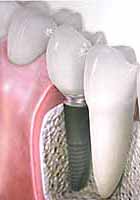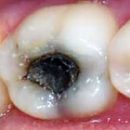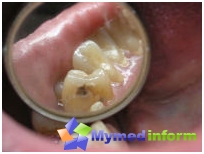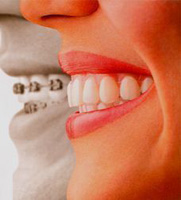Implantation involves the use of intraosseous structures, mainly screws, as a support for prostheses. Implants replace missing teeth entirely, including root.
Content
Why do I need implants
 The implant is a product from a biocompatible material that is introduced into the body to the surgical way to replace any organ or part of it and performs the function lost by this organ. Dental (dental) implant - a product from a biocompatible material, which is introduced into the jaw bone and serves as a support for a denture, T.E. Performs the function of the root of the tooth. Implantation has a rich history. Archaeological finds show that the ancient Egyptians, the Greeks, the Chinese, the Indians tried to replace remote teeth using various materials.
The implant is a product from a biocompatible material that is introduced into the body to the surgical way to replace any organ or part of it and performs the function lost by this organ. Dental (dental) implant - a product from a biocompatible material, which is introduced into the jaw bone and serves as a support for a denture, T.E. Performs the function of the root of the tooth. Implantation has a rich history. Archaeological finds show that the ancient Egyptians, the Greeks, the Chinese, the Indians tried to replace remote teeth using various materials.
The main development of implantology began in the XIX-XX in.in. and continues to the present. A lot of scientific research was conducted in this area, various designs of implants and methods of their installation were proposed, materials for the manufacture of implants and their interaction with the tissues of the body were studied.
Currently, intraosteny implants are most widely used. These implants are implanted into the jaw bone and, thus, an artificial root is created. And after installation on this «root» Artificial Crown All this design resembles a real tooth.
In its design, intraosteny implants are divided into three main types: screw, cylindrical and lamellar.
Most modern implants are made of titanium. The choice of this material is due to its unique biocompatibility with tissues, connection with which does not occur.
When implantation needs
Indilament testimony are:
- Single dentition defects (when there are no 1 tooth in the dentition);
- Included dentition defects (when there are no 2 or more teeth, but the defect is limited to teeth);
- terminal defects of the dentition;
- Full absence of teeth.
If you exit, the implant is suitable for any case associated with the loss of teeth.
Implantation is prohibited
Absolute contraindications:
- Cardiovascular disease
- Pathology of the immune system
- Bone System Diseases, Bone Reparation, for example osteoporosis
- Diseases of the endocrine system
- Disease blood
- Diseases of the central and peripheral nervous system
- Malignant tumors
- tuberculosis
- AIDS and Venereal Diseases
Relative contraindications:
- Perdontitis
- Pathological bite
- unsatisfactory oral hygiene
- Preiodine Oral Diseases
- Diseases of temporomandibular joints Bruxism
How to install implant
Depending on the localization of the defect, bite, structures and volume of bone tissue, the doctor chooses the type of implant and the method of its installation. Setting one implant takes about 30-45 minutes.
The operation consists of several stages:
- Dummy anesthesia
- Preparation of a place for implant. When the cooling sterile physiological solution is applied to the bone shape the bed for the implant. At this time you feel a little pressure.
- Instilatlation of the implant (Introduction)
- Stipping the plug and stitching the gums or formulation of the gums
After installing the implant, it will take time for healing. In the time you need careful and careful care. Use a soft toothbrush to not injure the sensitive gum. Stick up a soft diet for speedy healing. And in the planned manner, try to inspect the dentist. On the lower jaw osseointegration occurs, on average, after 3 months. On the top - after 5-6 months. Then it is possible to put a crown to the implant, and, both metal-ceramic and non-remotely. For the manufacture of which uses zirconium oxide (white).









